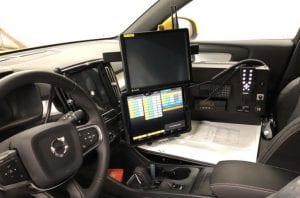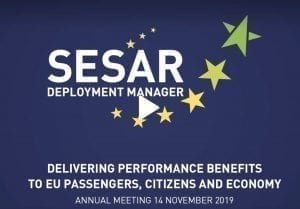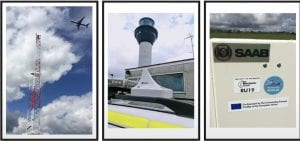Swedavia Vehicles is, among other things, working with long-term investments in technical capacity for future changes. One of the latest purchases is new friction measurement vehicles (friction cars), FMF. Current models have lived out their technical life span and are unable to keep up with the development at the same pace and in the same direction as Swedavia Vehicles.
The purchase of these new Surface Friction Tester cars stems from the fact that the current vehicles have lived out their technical life on the one hand and that some of today’s vehicles run on gasoline, which is not in line with the Swedavia environmental goal of being fossil-free in 2020 on the other hand.
This next generation Surface Friction Tester car is based on the Volvo XC40. The model has been chosen as it has the best conditions and specifications according to the requirements. These requirements include the possibility of more advanced technical equipment for friction measurement as well as higher energy efficiency and lower environmental impact.
All new vehicles will be completely different from any current ones, but with the same objective: friction measurement. The biggest difference for operational personnel will be the new digital systems on board (a new interface – see picture below). The new systems will be connected to the Digital Snow Tam and are compatible with RWIS (Runway Weather Information System, also Smart Landing Runway).
The purpose of this integration is to relieve and simplify the process of friction measurement for the operating personnel by letting the vehicle do more of the work during a friction measurement and reduce the workload of the staff to a few button presses.
All vehicles have been replaced during summer 2019. As the vehicles are still under procurement, a thorough examination of the condition of the vehicle and all the systems has been executed.
These investments are related to Unifying Safety Nets & Surface Movement.




